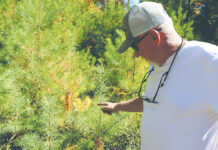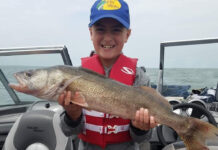Recently, a friend told me about a bat flying in their barn. It was late December and right before a cold spell. It landed and was hanging on a board in the rafters, and they wanted to know what to do about it.
Well, she wanted to “help” it, and her husband wanted to kill, or get rid of, it. So, that’s when my true “bat crusade” began.
Having heard that bats were actually good, but not knowing much about them, I began reading, researching and even making some calls to learn more about bats.
Plans
I hoped to be able to answer her questions on what to do with the bat, and to educate her husband on how beneficial and harmless bats really are.
Sadly, a deep cold spell hit, and the poor bat was discovered lying dead on the concrete barn floor a few days after she had seen it. It was then I realized we desperately needed to educate everyone, including adults, about how bats are good, and how we can help these threatened creatures.
False
First of all, bats are not flying rodents. They are the only true flying mammal, in the order Chiroptera meaning “hand wing.”
We have 11 species of bats in Ohio, all in the suborder Microchiropetra, meaning “small bat.”
Bats are not blind. They are nocturnal (active at night) and crepuscular (active at dawn and dusk) feeders that use echolocation or biosonar to navigate, orient and find food in the dark.
They cannot take off from the ground; rather they must free-fall to get into full-powered flight.
Bats do not carry rabies; rather, like all mammals, they can contract rabies. Less than half of 1 percent of all bats may contract the disease. Skunks, raccoons, coyotes and other mammals can catch rabies as well.
That being said, it doesn’t mean it’s O.K. to touch or handle bats, as they may be afraid and bite in self-defense. Bats are wild animals, and all wild animals can be dangerous.
Additionally, grounded bats are more likely to be sick so they should never be rescued bare-handed.
Bats typically have one “pup” a year, and are one of the slowest reproducing animals are earth, but can live for 20-40 years.
Bats are not doing well right now. Bat populations are in rapid decline due to White Nose Syndrome, deaths by wind energy turbines, loss of habitat, pesticides, pollution and human disturbances/killing.
Why care?
The economic and ecological importance of insectivorous bats alone is something to take note of, especially in the agricultural world.
According to a study, economic impact of the loss of bats in North America in agriculture could be in the $3.7 to $53 billion per year range. The article, Economic importance of bats in agriculture, appears in the April 1 edition of Science.
Bats are beneficial in many ways. Insectivorous bats are primary predators of night-flying insects, and many very damaging pests are on their menu.
Pregnant or nursing mothers of some bat species will consume up to their body weight in insects each night. A single little brown bat can eat more than 1,000 mosquito-sized insects in just one hour.
Bats help with reduced crop damage and pesticide use, which also means fewer pesticides entering our ecosystem. They eat beetles, moths, mosquitoes, stinkbugs, june bugs, leafhoppers and many other flying insects.
How to help
Between WNS and wind turbines, bats are being killed in unprecedented numbers. We all need to be aware of this major devastation and take action before it is too late.
Named for a cold-loving white fungus typically found on the faces and wings of infected bats, White-nose Syndrome causes bats to awaken more often during hibernation and use up the stored fat reserves that are needed to get them through the winter.
Infected bats often emerge too soon from hibernation and are often seen flying around in midwinter. These bats usually freeze or starve to death.
If you see a bat like this, contact 800-WILDLIFE to report it. People can transport the fungus spores, so we need to stay out of the caves and mines, and try to keep WNS from spreading.
Other things you can do to help our bat friends are: avoid disturbing bats, protect their habitat, reduce pesticide use, do not use “bug- zappers,” hang bat box houses and provide safe roosting habitats, and never kill a bat.
Illegal
As a matter of fact, killing any bat is illegal, as all bats species in Ohio are listed and protected.
Finally, education is vital. Teach and educate the young and the old about the benefits of bats, and how they are in serious battle for survival right now.
For more information, visit www.batcon.org/; http://whitenosesyndrome.org/; www.basicallybats.org/; and http://batworld.org.












